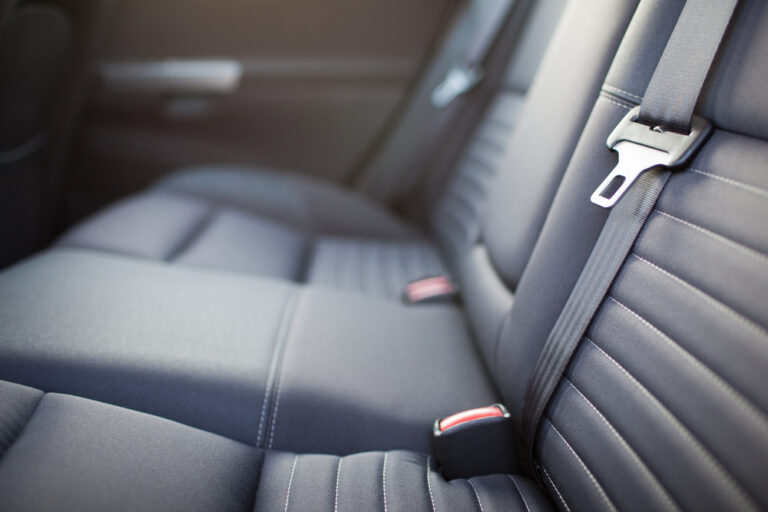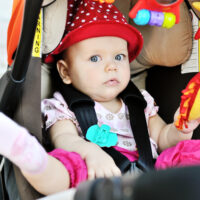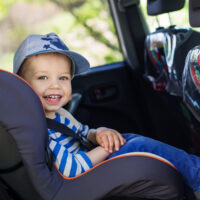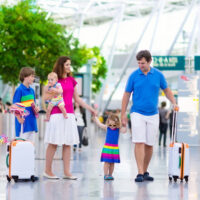The automotive industry has been testing vehicular crashes for decades as they strive to make automobiles as safe as possible for travel. The medical field is highly interested in reducing serious and critical harm to the passengers of these vehicles. There is still a need for people to become compliant and actively participate in keeping their children safe while driving.
Some Personal Experience
My personal awareness of car seat needs became especially apparent when we lived overseas. Since my first 2 children were born in America, we had car seats available to them before their arrival. We actually didn’t have access to a car seat for our 3rd child until after he was born. At this point, we were living overseas and the availability of car seats just wasn’t there. Our ride home from the hospital was surreal. I was holding my brand new baby in the backseat, acutely aware of the vulnerability of my newborn and myself. We took him home when traffic was light and fortunately for us, we arrived home safely. It’s not the same for all car rides. All children should have car seats available to them to help keep them safe in the event of an accident.
Let’s explore the positives and negatives behind positioning a car seat behind the driver versus the front passenger. Then we will take a look at what the research says is ideal positioning.
RELATED: How to Install Infant Car Seat Without Base
Car Seat Behind the Driver’s Seat
This position has several positives in terms of convenience. Firstly, getting in and out of the car makes this seat ideal. You get out of the car and you take one step to get your child. Imagine as you are approaching your vehicle with the car seat and the diaper bag and any other paraphernalia you are gripping. It seems quite logical to put this child behind the driver’s seat. Then you can get to where you need to go.
The negative side? It’s much more difficult to help them if they are directly behind you while you are driving the vehicle. Arms just weren’t designed to bend that way for you to find the pacifier or toy.
You may find yourself needing to pull over more often to tend to your child’s needs. Also, when you need to parallel park, your baby will be closer to the dangers of traffic when placed behind the driver’s seat.
RELATED: How To Clean Child Car Seats
Car Seat Behind the Passenger Seat
I placed my child behind the opposite chair I was seated in. If I was driving, I wanted to have access to him/her so I could see their face or help them put their pacifier in their mouth. Anything I could do to keep the baby happy while I was driving the vehicle was my top priority. Research has found the passenger seat to be the most popular among parents of newborns. Quite likely for very similar reasons I had. Although my kids were always in their car seats as babies, my priorities may have needed to be fine-tuned a bit more.
The not-so-nice part? This positioning can tempt you to become quite distracted while you are driving and “helping” your little one. It is more than easy for eyes to veer off the road. Every parent is weak when they are driving and their baby is in despair. Your instinct is and should be to care for the child’s needs as promptly as you are able. If that means your one hand is skimming the floor in the back seat while your car is in motion, then most parents are willing to take the risk. But should we? Is it worth it? Or maybe we should take the opportunity to pull over and stop the car so we can care for our child without making the drive more dangerous.
RELATED: The Best Backseat Baby Mirrors for Your Car
The Ideal Position According to Research
Research has unequivocally claimed the middle seat in the second row of the car as the best place to put your child. Whether forward-facing or rear-facing, this position is all about safety. If you have a motor vehicle accident, your child not only has the seat protecting him from moving around the car, there is also a great deal of cushion from every vantage point. If you get T-Boned and that side door becomes a scrap piece of metal, your baby has the best chance of not getting touched by the impact.
For those of you with 2 or more children, placing all of them in the middle is no longer an option. The outside seats will now be occupied. Research gives you the best information they can so you can make the best decisions you can make. Research helps you examine the risks involved that you may not be able to consider on your own. When we lived overseas, our babies were always in a car seat, because of research. When they needed booster seats, we acquired them. Again, because of research. There were certainly times we did veer off course, especially with booster seats. Our norm, however, was proper restraint systems in place for the safety of our children.
The research agrees that the middle seat in the second row is the best place to lock your child into a position of safety and prevention from getting harmed. The outer seats in the second row are safe. It is just that the seat in the middle is the safest.
Car Seat Positioning is About Safety
All in all, when you ask yourself the question, “Where is the best place to place my baby’s car seat?”. The answers you find will be based on this question, “How likely is it my child will remain safe and without injury in a motor vehicle accident?” Car seats were developed to help prevent injury and death in motor vehicle accidents. So, the position of the car seat in your vehicle should be based on data regarding car accidents more than convenience.
Anytime we place our bodies in a vehicle that will be transporting us, we are calculating a risk. We are stepping inside a potential torpedo. Vehicles are a necessary part of our society. Going to work, school, and doctor’s appointments requires vehicular transportation. We must respect the power a moving vehicle carries with it as we merge onto the interstate, slow down at a traffic light and allow pedestrians to walk in parking lots. We know not every child will be able to sit in the middle seat of the second row, but when they can, it is the best place to put them.
When the positioning of the car seat is decided, then you are one step closer to being ready to begin your life with your newborn. You have checked off one more box with the understanding behind your decision. Once this is accomplished, you will be more ready to simply enjoy your new little one.






